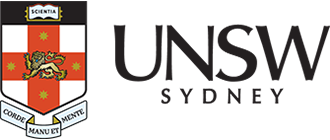STELLARIS DIVE Multiphoton Microscope

Description
The Leica DIVE system is an advanced multiphoton microscope designed for deep intravital imaging, featuring simultaneous spectral detection and fluorescence lifetime imaging (FLIM). It enables researchers to capture high-resolution, multicolour images of biological tissues at significant depths, offering improved penetration depth over visible lasers, making it ideal for studying dynamic processes in live organisms.
Specifications
-
- The 40x water immersion objective (HC PL IRAPO) has a numerical aperture of 1.1, a working distance of 0.63 mm, is corrected for a 0.17 mm cover glass, and is VISIR compatible.
- The 25x water immersion objective (HC FLUOTAR L) has a numerical aperture of 0.95, a working distance of 0.63 mm, is corrected for a 0.17 mm cover glass, and is VISIR compatible.
-
InSight X3 Single
- The InSight X3 Single provides a wide tunable wavelength range in the infrared spectrum, typically extending from around 680 nm to 1300 nm
Mai Tai eHP DeepSee
- Mai Tai eHP DeepSee offers a broad tunable range, spanning from around 690 nm to 1040 nm.
In addition, the system includes three continuous wave (CW) lasers at 488 nm, 561 nm, and 638 nm.
-
The system is equipped with four tunable HyD non-descanned detectors that can be adjusted to capture a wide range of fluorescence signals, allowing for the imaging of various fluorophores without the need to change filters or detectors. In addition, the system includes three internal Power HyD detectors.
Applications
- Intravital Imaging
- Tissue and Organ Imaging.
- Second Harmonic Generation (SHG)
- Label-Free Quantification of Metabolic Activity
Instrument location
Katharina Gaus Light Microscopy Facility
Room LG24, Lower Ground
Lowy Cancer Research Centre (C25)
UNSW Sydney, NSW 2033
Phone: 02 9065 5306
Email: KGlmf@unsw.edu.au
Dr Alex Macmillan
-
Email
alex.macmillan@unsw.edu.au
Dr Michael Carnell
-
Email
m.carnell@unsw.edu.au
Parent facility
Explore more instruments, facilities & services
Our infrastructure and expertise are accessible to UNSW students and staff, external researchers, government, and industry.


